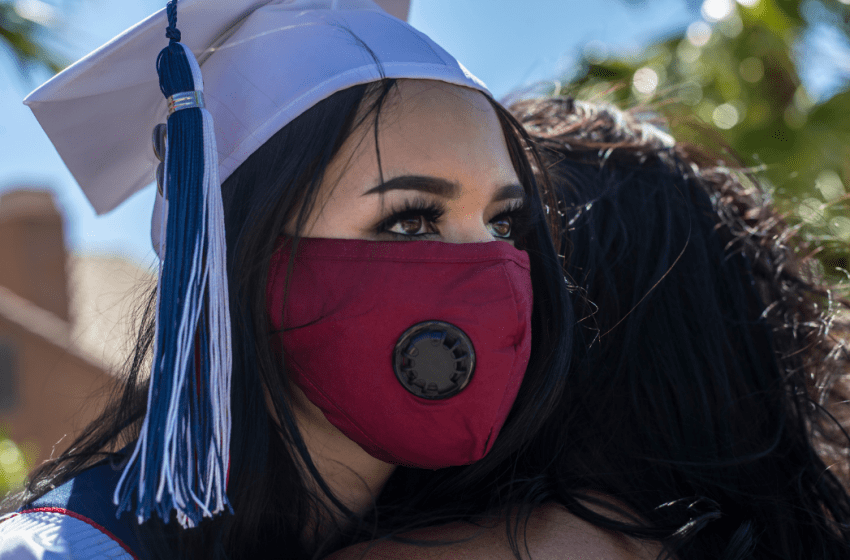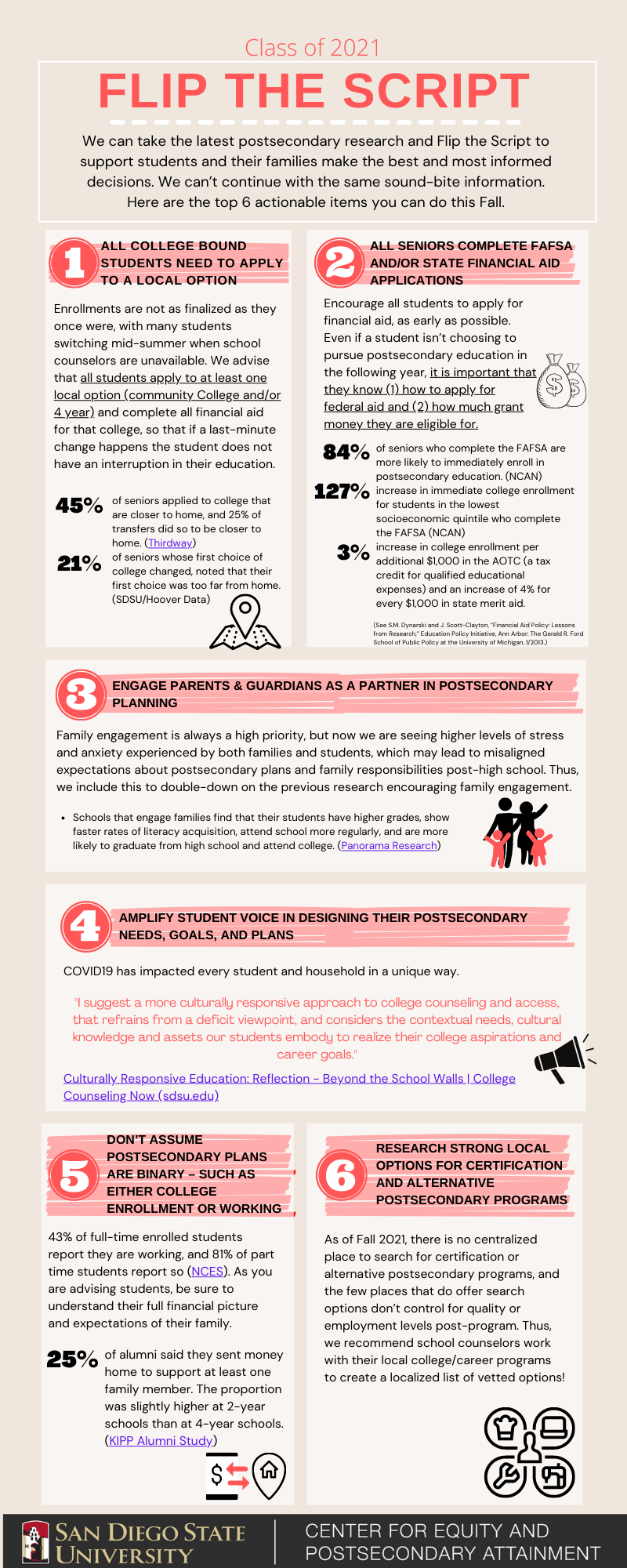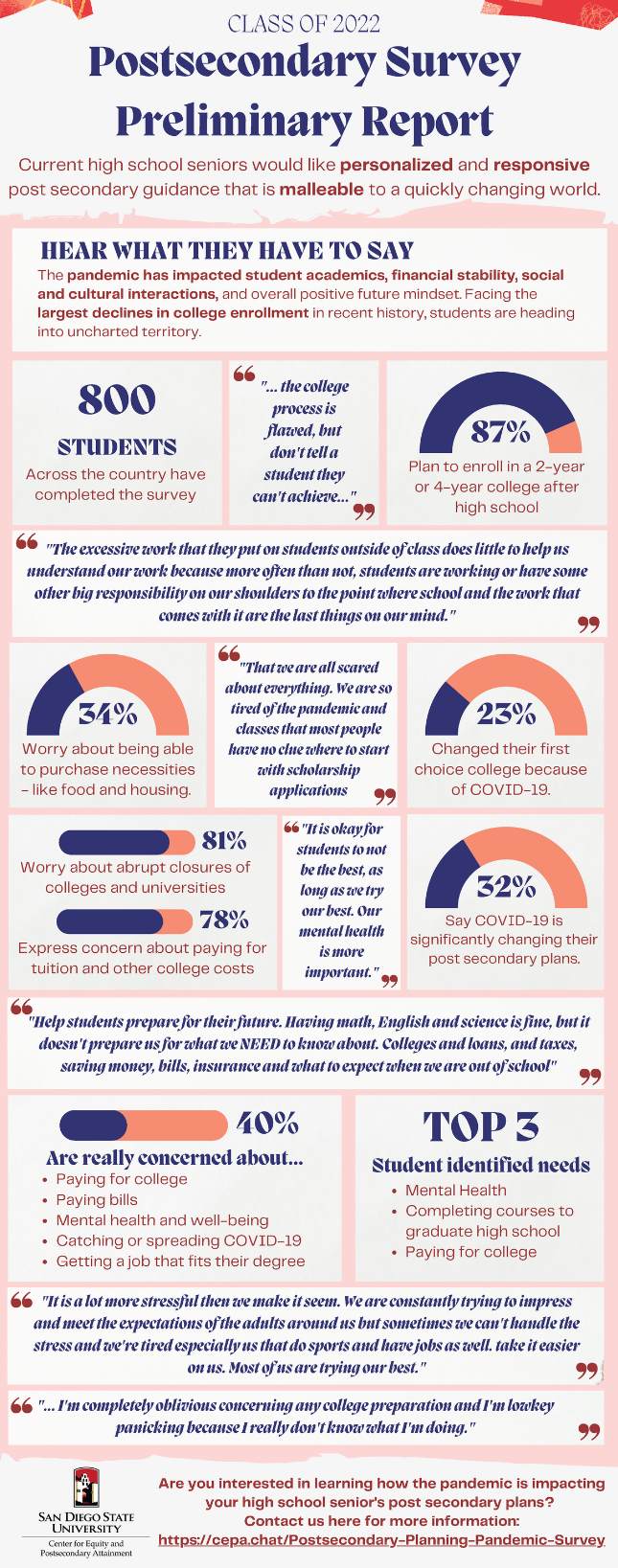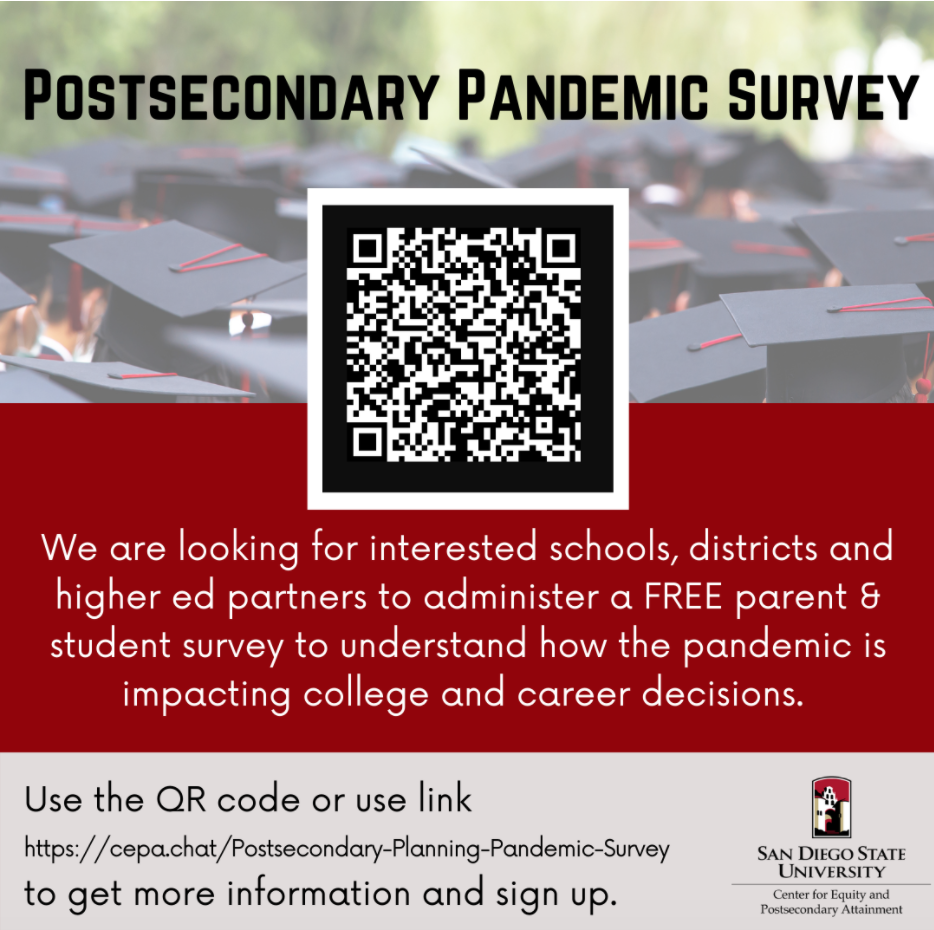
The Pandemic’s Impact on Students’ Postsecondary Decisions: Part 1
By Dr. Diana Camilo & Dr. Laura Owen
Co-Executive Directors for the Center for Equity and Postsecondary Attainment, San Diego State University
**The authors would like to acknowledge the American College Application Campaign, ACT, Kimberly Hanauer and Tricia Hodge for their partnership in the survey development and analysis, and the Kresge Foundation for providing financial support.
The COVID-19 pandemic has exposed an educational system rife with inequitable access to resources and insufficient support needed to overcome barriers already contributing to existing opportunity gaps (Causey et al., 2021; Recovery with Equity Taskforce, 2021). The effect of COVID19 in communities of color revealed what many educators already knew – educational opportunity is interwoven with wealth and privilege (Hines et al., 2021). As highlighted below, the decrease in direct high school to college enrollment continues to be staggering, with the most disproportionately impacted high school graduates attending low-income, high poverty, and high minority schools
(National Student Clearinghouse Research Center, 2020; 2021).
Class of 2019
- 26.1% chose not to return to college for their sophomore year
Class of 2020
- Students who attended low income and high minoritized high schools submitted fewer college and FAFSA applications
- Overall direct high school to college enrollment dropped 6.8%
- The biggest drop in enrollment was noted among students intending to enroll in community college
- Low-income high schools saw a 10.7% college enrollment decrease, compared to 4.6 percent for students enrolled in higher income schools.
- Enrollment for students transitioning from high poverty schools fell by 11.4 percent versus 2.9 percent for low-poverty schools.
- High minoritized schools saw an overall enrollment decline of 9.4 percent, while enrollment from low minoritized schools decreased by 4.8 percent
- 2% of the disengaged class of 2020 re-enrolled during fall 2021
Class of 2021
- Completed fewer Free Application for Federal Student Aid and Common Applications (FAFSA).
- Direct high school to college enrollment for the class of 2021 fell an additional 2.7%
- The biggest drop in retention to sophomore year was among community college students
Today’s college bound students are facing the largest declines in college enrollment in recent history, and for the most part, students are heading into uncharted territory. As school disruptions, health risks, and economic impacts wage on, especially for BIPOC communities, many students’ postsecondary plans continue to be altered with opportunities seemingly diminishing right in front of their eyes. A growing number of educational leaders fear that a crisis of disruption has quickly become a crisis of disengagement (STRADA, 2021). We cannot lose a generation of talented youth because of a worldwide pandemic.
Covid Melt
“Summer Melt” is a well-established phenomenon in higher education and refers to the significant number of high school seniors intending to enroll in college, who do not show up to campus the semester following high school graduation
(Castleman & Paige, 2014). Over the last decade, many efforts have been made to address summer melt and stem the loss of academically prepared, talented and committed students from the educational pipeline (Oreopoulos et al, 2020; Page et al., 2020). Alarmingly, summer melt statistics for the class of 2020 and 2021 dwarf the highest numbers seen prior to the pandemic, moving many to refer to the current loss in enrollment as “covid melt”
The on-going COVID pandemic serves as a reminder of how fragile and inequitable our systems of support are and raises an urgent call to action to ensure minoritized, lower income and under-resourced communities have the support needed for successful transitions to postsecondary opportunities. We have witnessed years of gains established through educational policies, national efforts, and best practices at the institutional level, yet these have been insufficient to withstand the barriers imposed by an ongoing pandemic. We stand at a crossroads, one ripe for new approaches and models centered on feedback and recommendations from the students and families most impacted by the pandemic.
Swift and Urgent Needs
The COVID-19 pandemic continues to influence students’ postsecondary decisions and we must commit to seek out their input, listen to their concerns, and collaborate on solutions. We are beginning to more fully understand the unique challenges faced by each high school graduating class and their needs, while similar, have some nuance.
Class of 2019 (Research here)
- 71% experienced increased stress and anxiety due to the pandemic
- 91% feared and worried about their own health of their family
- 89% had difficulty concentrating
- 86% reported disruptions in sleeping patterns
- 86% noted decreased social interactions
- 82% discussed increased academic performance concerns
- Students found online classes to be highly distracting due to a lack of class-engagement and prolonged attention to a computer screen.
Class of 2020
- 47% indicated that they intended to change their plans for college. Reasons included:
- attending a college closer to home
- Attending a less expensive college
- Going part-time
- Staying close to or living with family
- Postponing attendance until a later time
- 48% reported they would defer enrollment or look for a different school
- 20% reported they were changing their first-choice postsecondary institution
- 44% cited cost of attendance as their primary motivation
- 30% indicated they wanted to stay closer to home
Class of 2021
- 93% planned to enroll in a 2-year or 4-year college
- 74% reported attending a FAFSA workshop while in virtual learning
- 65% anticipated needing to purchase technology (laptop, headphone, printer, tablet)
- 85% reported internet costs to be significant or somewhat significant
- 76% identified mental health as a significant concern or some concern
- 38% of college bound students reported their first choice of college changed since COVID19.
- Reasons for first choice change
- 42% Cost of Attendance was too high
- 33% Personal Preferences Change, not covid related
- 21% School was too far from home
- 18% Not accepted to my first choice
- Disrupted students disconnected earlier in the postsecondary process than the class of 2020 (STRADA, 2021)
- Disrupted Latino students were more likely than others to feel financial pressure
- Disrupted Black students were more likely than others to be influenced by health risks
- 52% of disrupted students felt like they had the social capital they needed to figure out their plans after high school
Class of 2022
- 87% plan to enroll in a 2-year or 4 year college after high school
- 32% report that Covid-19 is significantly impacting their postsecondary plans
- 23% have changed their first choice college
- 81% are worried about abrupt college and university closures
- 78% do not think they can pay their tuition or other college related costs
- 34% worry about being able to afford housing or food costs
- Top three concerns:
- mental health
- completing courses to graduate high school
- paying for college


Continuing the Work
Data gathered from high school seniors across the country has highlighted the need to continue to address the flaws in the college process. Specifically, issues regarding equitable practices and the inequalities that have been widened due to the pandemic. These include financial burdens, access to mental health services, and a lack of comprehensive services at the college level. Thus, college advising, and postsecondary transition and support should focus on ways to help students navigate many of these challenges, most importantly through a responsive and holistic approach. School counselors and/or college access partners should be mindful that high school students and their families continue to have concerns regarding college enrollment.
For recommendations and best practices, refer to Part 2: Where Do We Go From Here? (Forthcoming)
If you would like to have your current high school seniors included in the current Postsecondary Pandemic Survey, please fill out this form https://cepa.chat/Postsecondary-Pandemic-Survey

